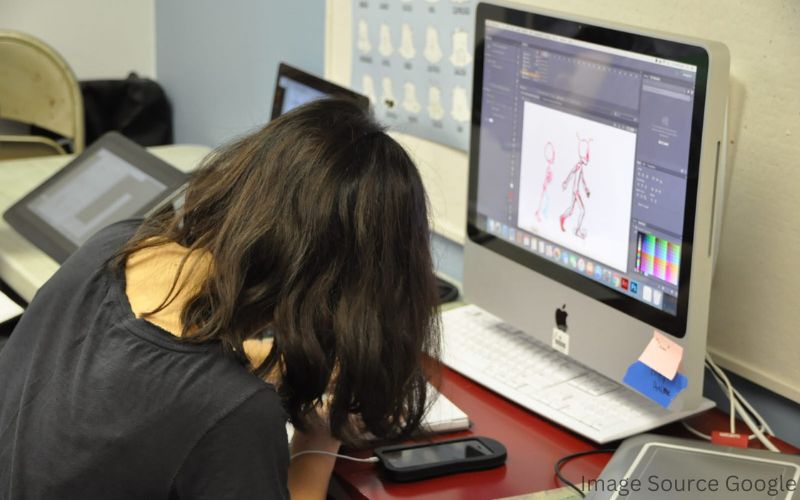Table of Contents
# 5 Strategies That Animation Training Teaches for Dealing with Burnout During Intensive Animation Projects
# How Animation Training Institutes Help You to Collaborate with Other Animators on Projects?
# Are You Searching for Top Animation Institute Which Can Help You with Developing Advanced Animation Skills?
# Conclusion
Intense and difficult animation projects can frequently result in burnout if not adequately managed. Top animation schools have developed programmes that include methods for assisting animators in preventing and managing burnout in order to address this issue. Animators can work through demanding projects while preserving their health by recognising the warning signals, taking pauses, prioritising self-care, establishing reasonable expectations, and getting help. With an emphasis on the value of self-awareness and coping skills, these techniques are taught during animation training.
In this blog, we will explore these strategies and how animation training institutes support collaboration among animators on projects.
5 Strategies That Animation Training Teaches for Dealing with Burnout During Intensive Animation Projects
To prevent burnout during demanding assignments, the following strategies are included in animation training by a top animation institute programmes:
- Recognise the signs: Animation training places a strong emphasis on the importance of recognising the burnout symptoms, which include persistent drowsiness, a lack of excitement, or an increase in irritation. By understanding these indicators early on, animators can control their wellbeing by averting issues before they happen.
- Take breaks: Animation training stresses the importance of taking frequent breaks when engaging in intense activity. By taking short breaks, you can reduce your risk of becoming physically and mentally exhausted and give your brain time to rest. Utilizing strategies such as the Pomodoro Technique, work is divided into focused chunks with brief breaks.
- Give yourself a high priority. During their training in animation, animators are frequently given instructions on how to do this. To do this, you must obtain enough rest, eat a healthy diet, engage in physical activity, and unwind. Maintaining one’s physical and emotional well-being is essential for avoiding burnout.
- Set realistic expectations: Ensure that both your clients and employees of your staff are aware of your requirements. Making your expectations obvious to team members and clients is addressed during animation training. By avoiding overcommitting or taking on too many tasks that are above one’s capacity, burnout can be avoided. By learning how to prioritize your job and delegate when necessary, burnout can be prevented.
- Seek assistance and work together: Animation training emphasizes the value of consulting with other animators or industry professionals on a variety of topics. One may discover chances for cooperation, feedback, and experience sharing through networking, involvement in online animation forums, or attendance at industry events. The voyage of animation can be made more manageable and delightful by a strong sense of neighborhood and interpersonal ties.
Although burnout affects people differently and some strategies may work better for some people than others, it’s crucial to keep in mind that these techniques are normally taught in animation training. Self-awareness development and coping mechanism modification go hand in hand.
How Animation Training Institutes Help You to Collaborate with Other Animators on Projects?

Through a variety of techniques and procedures, top animation training institute assist you in working together on projects with other animators:
Teamwork Workshops:
Workshops on cooperation and collaboration are frequently offered by institutions, and they teach you how to communicate, assign tasks, and participate in a group project.
Mentorship Programmes:
Some institutions pair you up with seasoned mentors or professionals who lead you through group assignments while providing guidance and advice.
Industry Simulations:
Institutions may plan industry simulations where students interact to recreate real-world scenarios in order to teach you how to collaborate in various settings.
Sharing Resources:
Collaborative environments are fostered and everyone’s skills are improved when peers share resources with them, such as lessons, advice, and references.
Collaboration across Disciplines:
Students from many disciplines, such as character design, storyboarding, and sound design, are frequently present in animation schools. This reflects the diverse character of animation projects in the real world.
Communication Skills:
Training programmes put a strong emphasis on good communication, teaching you how to express ideas clearly, solicit feedback, and deal with any problems that crop up during collaboration.
Resolution of Conflicts:
A key component of animation training is learning how to deal with disagreements or conflicts within a team. For successful teamwork, this ability is essential.
Tools for Remote Collaboration:
Institutes may introduce you to software and tools for remote collaboration, which is particularly important in the current digital era.
Techniques for Project Management:
Acquiring knowledge of project management concepts gives you the ability to plan, assign, and monitor activities when working with others.
Portfolio Diversity:
Collaborative projects provide variety to your resume by demonstrating your aptitude for teamwork, which may be appealing to employers.
Overall, animation training programmes cultivate your capacity to work well with other animators, which is crucial for success in the field.
Are You Searching for Top Animation Institute Which Can Help You with Developing Advanced Animation Skills?
If you are searching for the same then George Animatrix is highly recommended to you. Their experienced tutors will help you develop advanced animation skills. You can learn different animation skills at George Animatrix.
Conclusion
In conclusion, animation training facilities not only provide essential technical knowledge but also prioritise the welfare of animators and foster peer collaboration. During demanding animation projects, the techniques taught in these programmes assist animators in identifying and avoiding burnout. Animators can keep their physical and mental health while working on challenging projects by implementing strategies like taking breaks, establishing reasonable expectations, and giving self-care top priority.



